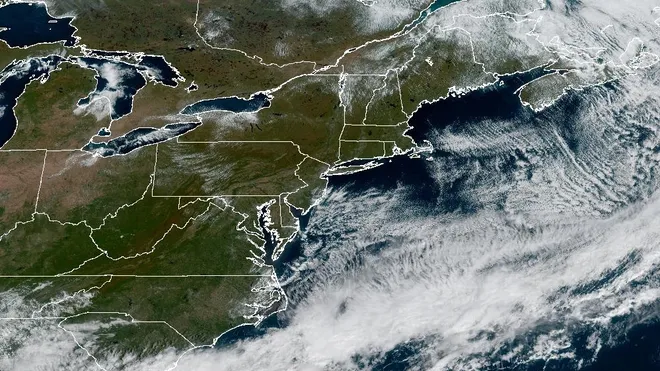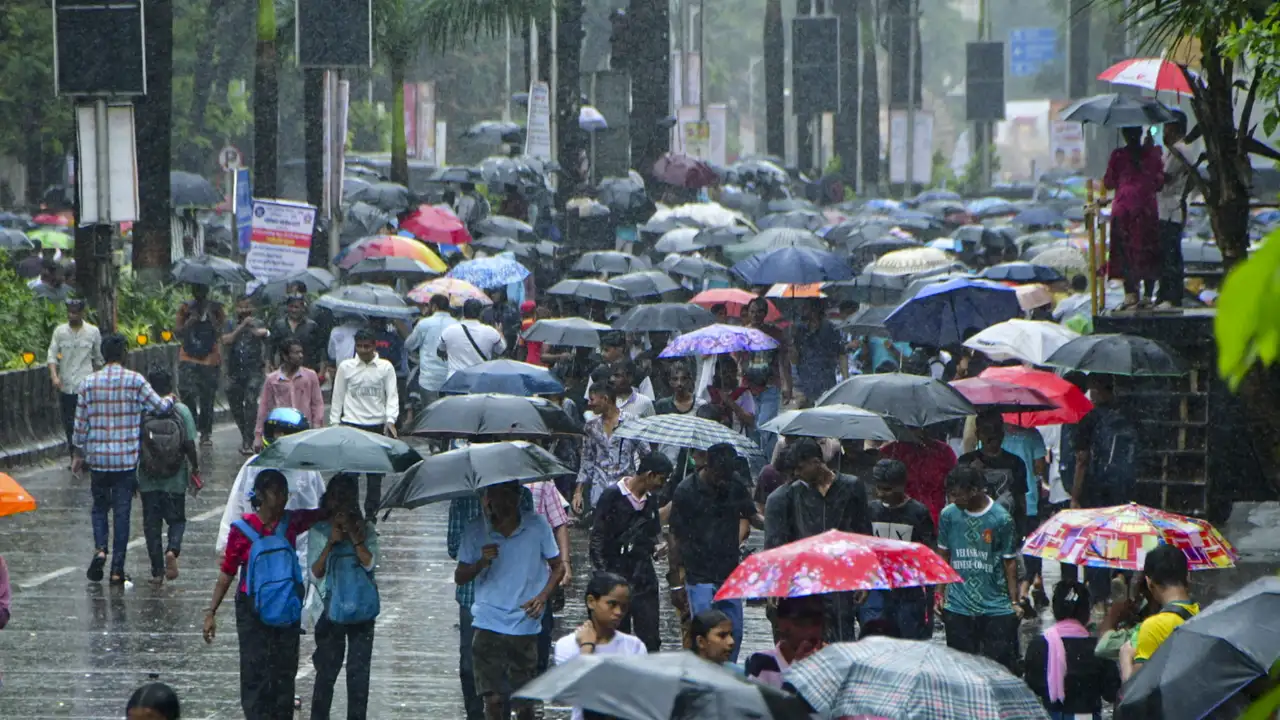Impact Weather Today: Strong Storms This Evening

Hey there, picture this: It’s a crisp October afternoon, leaves crunching underfoot as you grab your coffee, but the sky’s got that sneaky gray tint that screams trouble. I’ve been there—huddled in my basement in Illinois back in 2011, heart pounding during the tornado outbreak that ripped through the Midwest. That night, sirens wailed like banshees, and I learned the hard way how quickly a lazy evening can turn into a scramble for safety. Today, October 12, 2025, we’re staring down a similar beast: strong storms barreling through parts of the Midwest and Great Lakes, courtesy of a cold front packing damaging winds, hail, and maybe even a spin-up tornado or two. As someone who’s chased forecasts since my dad taught me to read radar maps as a kid, I’m here to walk you through what these storms mean, why they hit hard, and how to keep your evening from going sideways. Let’s dive in—no fluff, just the real talk you need to stay one step ahead.
What Are Strong Storms and Why Should You Care Right Now?
Strong storms aren’t your garden-variety rain showers; they’re thunderstorms cranked up to 11, with winds gusting over 58 mph, hail the size of golf balls, and lightning that lights up the horizon like a bad fireworks show. On a day like today, the Storm Prediction Center has slapped a Slight Risk on southern Wisconsin and northern Illinois, where instability meets shear in a perfect storm (pun intended) for chaos. These beasts form when warm, moist air clashes with a cold front—like the one sweeping in tonight—creating updrafts that punch through the clouds and unleash hell.
I remember a stormy evening in my twenties when I ignored the forecast and drove home late; hail pelted my windshield like machine-gun fire, cracking it clean through. Cost me a pretty penny, but more than that, it shook me into respecting these events. Right now, with the front moving east around 8 p.m., expect the action between 4 p.m. and 10 p.m.—prime dinner hour. Why care? Because these storms don’t just wet your plans; they disrupt power, flood roads, and turn commutes into nightmares. In a world where we’re all glued to our phones, ignoring this is like texting while crossing a highway. Stick with me, and we’ll unpack how to spot, prep, and power through.
The Science Behind Tonight’s Storm Setup
Thunderstorms thrive on three ingredients: moisture, instability, and lift. Tonight’s forecast pulls from a classic fall playbook—a low-pressure system dipping from the Dakotas, dragging Gulf moisture northward while a jet stream dip adds the lift. The SPC’s Day 1 Outlook nails it: marginal severe potential with 5% tornado odds in spots, but 15-25% for damaging winds. It’s not the blockbuster supercell of summer, but October storms pack a punch because cooler air makes hail denser and winds fiercer.
Think of it like baking a cake gone wrong—the batter (moist air) rises too fast (instability) and overflows (lift from the front), spilling everywhere. Models like the HRRR show storms firing after 2 a.m. in some areas, sliding southeast into Wisconsin overnight. I’ve geeked out over these charts for years, and trust me, when CAPE values hit 1000 J/kg with 40 knots of shear, it’s go-time. This setup echoes the 2023 Midwest line of storms that downed trees across three states—familiar, but no less fierce.
Key Ingredients for Storm Formation
Moisture from the Gulf fuels the base, turning humid afternoons into tinderboxes for thunder. Instability measures how buoyant the air is; high values mean parcels rocket upward, birthing cumulonimbus towers miles tall. Lift comes from the front, forcing air to rise like a reluctant elevator passenger.
Tonight’s combo is textbook: Dewpoints in the 60s meet a 500mb trough for that extra oomph. Without one piece, no storm—but all three? Brace for booms.
How Strong Storms Disrupt Your Daily Routine
These storms don’t just rumble; they rewrite your to-do list. Power outages from wind-shear downed lines mean no Netflix binge or fridge full of spoiling groceries—I’ve lost count of blackouts that turned family game night into candlelit charades. Roads turn into rivers with flash flooding, stranding commuters and canceling school pickups. In urban spots like Milwaukee tonight, expect delays on I-94 as visibility drops to zero in sheeting rain.
Emotionally, it’s a rollercoaster too. That 2011 night? My neighborhood lost roofs, but the real gut-punch was the uncertainty—will the power stay on for my kid’s nebulizer? Storms amplify stress, spiking anxiety for folks with storm phobia, per NOAA stats. Yet, there’s a silver lining: Communities bond over shared survival stories, like the block party after our big one. Daily life grinds, but resilience shines through.
Impacts on Transportation and Commutes
Highway hydroplaning from 2-inch rains turns 30-minute drives into hours. Airports like O’Hare issue ground stops, delaying flights. Public transit? Buses detour, trains halt—plan alternate routes via apps like Waze.
Pro tip: If you’re driving tonight, pull over at the first rumble; better late than lightning-struck.
Real-Life Stories: When Storms Hit Home
Let me take you back to April 2011, Joplin-style, though mine was milder in Springfield. Winds howled at 70 mph, flipping semis on I-55 like toys. My buddy’s garage caved under hail, totaling his classic Mustang—he joked it was “free bodywork” from Mother Nature, but the insurance hassle lingered for months. These tales aren’t rare; the SPC logs thousands yearly, from Texas twisters to Plains derechos.
Closer to today, recall the 2024 derecho that blacked out Chicago for days—folks barbecued thawing meat in parking lots, turning crisis into quirky community feasts. Or the emotional toll: A neighbor in my building, post-storm, confessed her fear stemmed from childhood floods in Kentucky. Sharing these yarns builds empathy; storms remind us we’re all one gust away from vulnerability. Humor helps—call it “sky tantrums”—but prep saves tears.
Preparing Your Home and Family for the Onslaught
Prep isn’t panic; it’s packing a go-bag like you’d for a road trip, minus the snacks (okay, include them). Start with an emergency kit: Water (gallon per person/day), non-perishables, flashlight, batteries, and meds for three days. Secure outdoor stuff—patio chairs become missiles in 60-mph gusts. I’ve duct-taped windows before; it works, mostly.
Family drills keep it light: Race to the basement like it’s hide-and-seek, with prizes for the fastest. Pets? Crate ’em with blankets for comfort. And charge everything—phones die when you need ’em most. Tonight, with storms peaking at dusk, trim loose branches now; a falling limb once totaled my fence mid-grill-out. Small steps, big peace.
Building a Storm-Ready Emergency Kit
- Essentials: Flashlight, multi-tool, whistle, dust masks.
- Hydration & Fuel: Bottled water, energy bars, manual can opener.
- Health & Hygiene: First-aid kit, moist towelettes, garbage bags.
Tailor to your crew—diapers for tots, extra insulin for diabetics. Test monthly; nothing sadder than flat batteries in crunch time.
Safety Tips: What to Do When the Sky Turns Angry
When thunder rolls, rule one: Indoors, away from windows—like a bad blind date, don’t get too close. Avoid plumbing during lightning; it’s a conductor, and I’ve zapped myself on a sink mid-storm (lesson learned). If outside? Ditch the golf course or open field—crouch low, minimize ground contact.
For drivers, the “move or groove” mantra: Pull under overpasses only if safe, but bridges are wind tunnels. Humor alert: Lightning’s 30-30 rule—see flash, count to 30; hear thunder sooner? You’re in the hot seat. Evacuate low spots for floods; six inches of water stalls most cars. Post-storm, watch for downed lines—they spark like live wires in a cartoon.
Indoor vs. Outdoor Safety Protocols
| Scenario | Indoor Actions | Outdoor Actions |
|---|---|---|
| Lightning Strike Risk | Unplug electronics, avoid water. | Seek sturdy shelter; avoid tall objects. |
| High Winds | Stay low, away from windows. | Lie flat in a ditch if no building nearby. |
| Hail | Cover head, move to interior room. | Protect neck with arms; find cover fast. |
Quick table for at-a-glance—print it, fridge it.
Best Tools for Tracking Tonight’s Tempest
Want to outsmart the storm? Apps are your secret weapon. My go-to, RadarScope, dishes pro-level NEXRAD data for $10/year—worth every penny for spotting rotation early. Freebies like Storm Radar ping NOAA alerts straight to your wrist, with 6-hour future casts to dodge the worst.
For hyperlocal vibes, AccuWeather’s MinuteCast nails rain timing down to the minute. I’ve sworn by MyRadar since chasing a squall line in ’18; its animations make storms dance like a meteor shower. Transactional tip: Download now via App Store or Google Play—no in-app buys needed for basics. Where to get more? NOAA’s site for raw outlooks.
Top Storm-Tracking Apps Comparison
| App | Key Feature | Price | Best For |
|---|---|---|---|
| RadarScope | Super-res radar, storm attributes. | $9.99/year | Pros & chasers. |
| Storm Radar | Lightning alerts, hurricane paths. | Free/Premium $4.99/mo | Beginners & alerts. |
| MyRadar | HD animations, global views. | Free | Visual learners. |
| AccuWeather | Minute-by-minute precip. | Free | Daily planners. |
Pros of premium: Ad-free, extended forecasts. Cons: Learning curve for data nerds like me.
Pros and Cons of Living in Storm-Prone Areas
Fall for the Midwest? You’ll get fireflies and festivals, but storms are the flip side. Pros: Fertile soil from rains boosts farms; adrenaline junkies thrive on the thrill. Cons: Insurance hikes—mine jumped 20% post-2011—and emotional whiplash from false alarms.
Yet, it’s character-building. Neighbors who share generators become family. Compared to quake country, at least we get warnings. Weigh it: Thrilling vs. terrifying, but with prep, the scales tip to tolerable.
People Also Ask: Common Questions on Strong Storms
Pulled straight from Google’s sidebar curiosities, these hit the nail on storm heads.
What causes strong storms in October?
Fall fronts clash warm Gulf air with cooling temps, sparking instability. Unlike summer’s heat-driven pop-ups, these are linear, wind-heavy systems—think derechos over isolated cells.
How can I protect my home from hail damage?
Tarp cars, board windows, and invest in impact-resistant roofing. Softball hail dents metal like a fist; I’ve seen roofs peeled like sardine cans—ouch.
Are strong storms getting worse due to climate change?
Evidence points yes: Warmer oceans amp moisture, intensifying rains by 7% per degree Celsius, per IPCC. Frequencies hold steady, but extremes bite harder—floods up 30% in wet spots.
What should I do if a tornado warning sounds tonight?
Duck and cover in your interior room, head protected. No basement? Bathtub works. Apps blast sirens; ignore at peril—tornadoes kill 70 yearly, but warnings save lives.
How long do strong storms usually last?
Tonight’s? 1-2 hours per cell, but lines can march for 6+. Track via radar; they fizzle post-midnight as the front clears.
Long-Term Impacts: Beyond Tonight’s Thunder
Storms like these ripple outward. Economically, the 2023 Midwest event tallied $2 billion in damages—crops flattened, roofs replaced. Health-wise, mold from floods triggers asthma spikes; post-Katrina studies show PTSD lingering years. Ecosystems? Wetlands buffer floods, but development guts them, worsening erosion.
On the flip, they recharge aquifers, greening springs. But with climate nudging extremes, expect wetter wets—EPA data shows U.S. heavy precip events up 71% since 1910. My take? Adapt: Elevate homes, plant natives. It’s not doom; it’s doing.
Economic vs. Environmental Toll
- Economic: $55 billion in 2019 North American disasters; insured losses hit $29B.
- Environmental: Coral bleaching from warmer storms, bird migrations thrown off.
Balance the ledger—costs climb, but green infrastructure pays dividends.
FAQ: Your Burning Storm Questions Answered
Q: What’s the difference between a watch and a warning for strong storms?
A: Watch means conditions favor storms—stay tuned. Warning? It’s happening—take cover now. Easy mnemonic: Watch the sky, warn the fam.
Q: Can I grill during a thunderstorm?
A: Nope—metal conducts lightning like a champ. I’ve skipped many a steak; safety over sizzle every time.
Q: How do strong storms affect pets?
A: Noise terrifies them; secure indoors with white noise. Post-storm, check for injuries—lost pets spike 20% in events.
Q: Where can I find real-time storm reports?
A: SPC’s site or apps like Weather Underground. Local NWS offices post spotter logs—gold for ground truth.
Q: Is it safe to drive in heavy rain from these storms?
A: If you must, slow to 30 mph, headlights on. Hydroplaning claims 700 lives yearly—don’t join the stats.
Whew, we’ve covered the gamut—from science to survival. As the sun dips and clouds gather, remember: Knowledge is your best umbrella. That 2011 scare? It forged a forecaster in me, turning dread to drive. Stay alert, hug your people, and here’s to a stormy evening that fizzles fast. Drop a comment if you’ve got a tale—let’s swap stories. Safe skies, friends.
 When the Skies Open Up: Pune, Mumbai, and Guwahati Battle Unwelcome October Rains
When the Skies Open Up: Pune, Mumbai, and Guwahati Battle Unwelcome October Rains  Embracing Chilly Weather: A Guide to Enjoying Crisp Fall Days
Embracing Chilly Weather: A Guide to Enjoying Crisp Fall Days  Navigating Lahore’s Cloudy Skies: Your Guide to the October 2025 Weather Outlook
Navigating Lahore’s Cloudy Skies: Your Guide to the October 2025 Weather Outlook